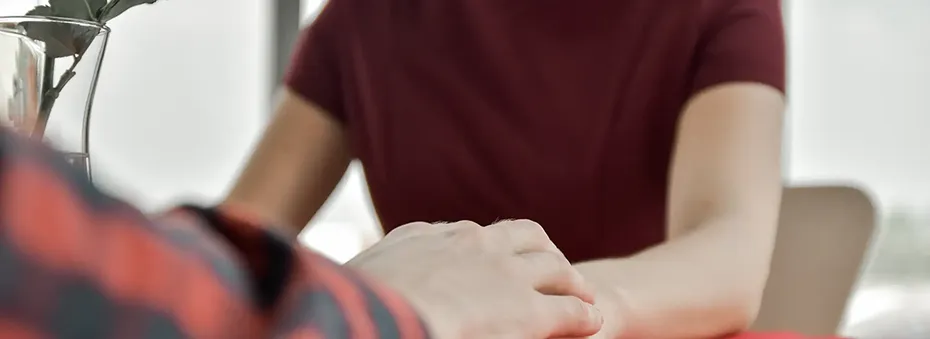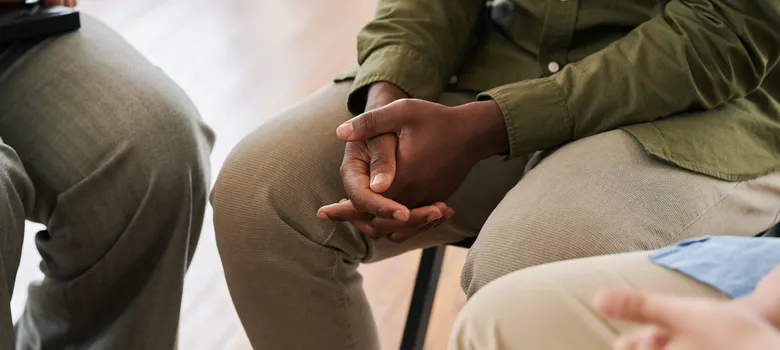Internet Addiction Treatment | Overcoming Digital Addiction
Effective treatment for internet addiction involves a combination of talking therapies such as Cognitive Behavioural Therapy (CBT), support groups, lifestyle changes, and, in some cases, medication. Whether you’re spending hours on social media, immersed in online gaming, or unable to disconnect from digital devices, know that you’re not alone. Identifying the signs and seeking support through structured internet addiction treatment can restore balance and improve your mental health.
Understanding Internet Addiction
Internet addiction can significantly disrupt daily life, impacting personal relationships, academic and professional responsibilities, and overall well-being. It is essential to understand how this behaviour takes root and the underlying factors that fuel it.
What Is Internet Addiction?
Internet addiction is a form of behavioural addiction characterised by an inability to control one’s internet use. It often involves compulsive internet use, where people feel compelled to go online despite clear negative consequences. The behaviour is not limited to the amount of time online, but includes the compulsive nature of certain online activities, such as gaming addiction, social media use, or online shopping.
Though internet addiction is not universally classified as a mental health disorder, it shares many features with recognised behavioural addictions. Mental health professionals use various assessments, including an internet addiction test, to evaluate severity and inform a suitable treatment plan. This condition may also be referred to as digital addiction or internet addiction disorder.
Common Signs and Symptoms
Recognising the symptoms of internet addiction is the first step towards recovery. Warning signs may include:
- Spending excessive time online, often at the cost of sleep or responsibilities.
- Feeling anxious, irritable, or low when not using the internet.
- Repeated unsuccessful attempts to reduce internet use.
- Withdrawing from offline activities and hobbies.
- Using the internet as a coping mechanism for stress, anxiety, or depression.
- Hiding the extent of your internet use from others.
- Neglecting hygiene, education, or work obligations.
Physical effects of internet addiction may include eye strain, headaches, back pain, or signs of computer addiction like repetitive stress injuries.
Underlying Causes and Risk Factors
Internet addiction may develop from a combination of emotional, psychological, and social factors. Co-occurring mental health issues, such as anxiety, depression, or attention deficit hyperactivity disorder (ADHD), are common among people struggling with internet dependence. A history of substance addiction or behavioural addiction can also increase vulnerability.
Risk factors include:
- Family history of addiction
- Feelings of loneliness or isolation
- Adverse life events, such as bullying or job stress
- Preoccupation with online activities like online gaming or social media
The anonymity of the internet and the immediate gratification it offers can reinforce addictive behaviours. For some, the internet becomes a primary means of escape from emotional discomfort.

Evidence-Based Internet Addiction Treatment Approaches
Treatment of internet addiction involves multiple approaches tailored to the patient. The most effective treatment plans combine therapy, support systems, and lifestyle interventions.
Cognitive Behavioural Therapy (CBT)
Cognitive Behavioural Therapy (CBT) is the most established approach for treating internet addiction. It focuses on identifying the negative thought patterns and behaviours linked to excessive internet use.
CBT helps you set healthy boundaries, understand the emotional triggers behind your online habits, and replace digital dependency with more constructive coping mechanisms. This therapy typically involves monitoring patterns of internet use, challenging harmful beliefs, implementing structured schedules for both online and offline time, and addressing underlying conditions such as anxiety or depression.
Many people experience significant improvements in symptoms within a few months. CBT has been shown to enhance treatment outcomes and can be adapted for both adolescent and adult internet addiction cases.
Group Therapy and Support Networks
Group therapy provides a safe, supportive space to share experiences and receive feedback. Whether therapist-led or peer-supported, these groups foster accountability and mutual understanding. They help patients feel less isolated and strengthen motivation to change.
Online support options have also emerged, though professional guidance is still recommended to ensure reliability. Support networks can play a critical role in sustaining progress after formal treatment ends.
Medication and Medical Interventions
Medication is not a primary treatment approach, but may be used alongside therapy in cases where internet addiction is associated with mental health conditions like depression or anxiety. Antidepressants and anti-anxiety medications can reduce distress and improve participation in therapy.
Such interventions are assessed and monitored by medical professionals. Medication is rarely used in isolation but may support intensive treatment in cases where psychological symptoms interfere with recovery.
Family-Based Therapies
Family dynamics often influence internet usage patterns, particularly in young people. Family-based therapy focuses on improving communication, setting boundaries, and educating loved ones about the nature of digital addiction. Sessions may address specific challenges, such as internet blocking at home or shared agreements on screen use.
Engaging the family in therapy has been shown to enhance treatment effects, especially for adolescents. It can also empower parents or partners to support recovery without escalating conflict.
Support Strategies and Lifestyle Adjustments
Recovery from internet addiction requires sustainable changes in daily routines. Therapies are most effective when paired with practical lifestyle adjustments.
Developing Healthy Digital Habits
Creating structured digital habits is another essential component in reshaping your relationship with the internet. This can include scheduling screen-free times, using apps to monitor and limit time on the internet, setting tech-free zones within the home, and making time for offline hobbies or physical activity. These consistent, practical changes help reduce excessive internet use and support lasting recovery.
Setting Boundaries and Managing Triggers
Recognising triggers is essential. Boredom, loneliness, or stress can prompt the urge to go online. Setting clear limits on online activities, using tools to restrict access to certain apps, and avoiding internet use during vulnerable periods can help manage problematic internet use.
Therapy for internet use often includes identifying trigger situations and building strategies to stay grounded when cravings strike. Practising mindfulness or journalling can improve self-awareness.
Involving Family and Friends
Involving trusted people in your recovery can enhance outcomes. Sharing your treatment aims with family or friends fosters accountability and support. Participating in offline group activities also strengthens social bonds and counters isolation.
Making lifestyle changes together, such as device-free meals or shared hobbies, can benefit everyone, not just the person struggling with internet addiction.

Finding Professional Help for Internet Addiction
Accessing treatment centres or private therapists who specialise in behavioural addiction is vital. With the rise of digital dependence, more professionals are tailoring treatment to include innovative treatment models that address both psychological and technological dimensions.
Choosing a Qualified Specialist
Not all addiction specialists are experienced in treating behavioural conditions like internet addiction. Seek professionals with relevant experience, qualifications, and a commitment to personalised care. Look for practitioners registered with relevant UK bodies and who offer a comprehensive treatment plan suited to your needs.
In-Person Versus Online Therapy
Both in-person and online therapy have benefits. In-person sessions offer direct interaction and may be more effective for building rapport. However, many people prefer online therapy for its accessibility and flexibility.
Whichever format you choose, ensure the therapist is properly licensed and experienced in behavioural and digital addiction treatment.
Evaluating Treatment Programmes
A high-quality programme for internet addiction treatment should offer a blend of therapies, regular check-ins, and a focus on long-term change. Programmes may include CBT, family therapy, medication support, and relapse prevention planning.
Some inpatient or outpatient addiction programmes, such as those at PROMIS, also address co-occurring mental health issues and offer holistic support for long-lasting recovery.
When selecting a programme, evaluate its treatment modalities, structure, and whether it tailors treatment to individual needs. Programmes that provide aftercare and ongoing support typically lead to better treatment outcomes.
Taking the Next Step Towards Balance at PROMIS
If you or a loved one is struggling with internet addiction, seeking structured support can make a meaningful difference. PROMIS offers evidence-based treatment programmes that address both the behavioural patterns and underlying emotional factors associated with internet dependency.
With an experienced clinical team and a commitment to personalised care, PROMIS provides an environment where long-term recovery is not just possible, it’s actively supported.
Frequently Asked Questions
What are the most effective approaches to managing compulsive online behaviour?
A structured treatment plan combining CBT, support groups, and behavioural strategies tends to deliver the most effective results.
Can cognitive behavioural therapy help in overcoming excessive internet use?
Yes. CBT is a core component of treatment for internet addiction and is supported by research as an effective treatment.
What are the signs that someone may require professional help for their online habits?
Key signs include neglecting responsibilities, feeling distressed when offline, and using the internet as a primary emotional outlet.
How does family involvement contribute to the success of treatment for online dependency?
Family involvement improves communication, sets clear expectations, and provides emotional support throughout the recovery process.
What lifestyle changes are recommended to treat habitual internet usage?
Reducing the amount of time spent online, increasing offline activities, and setting clear boundaries are all essential parts of a healthy lifestyle shift.
How long does it typically take to see improvements after starting treatment for internet overuse?
Initial progress can be seen in a matter of weeks, but lasting change often takes several months of consistent effort and support.
